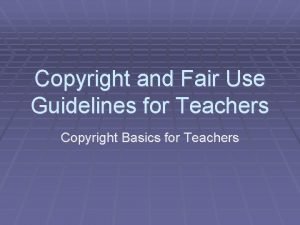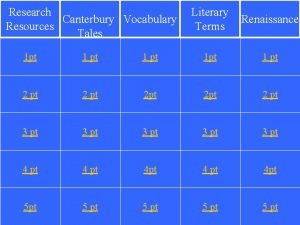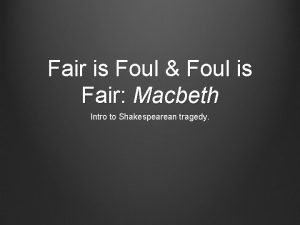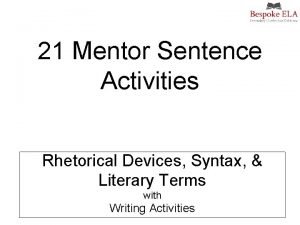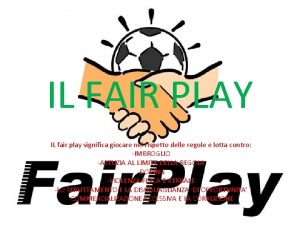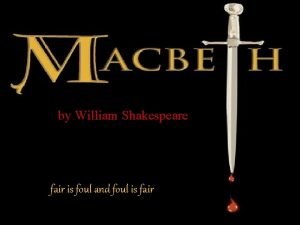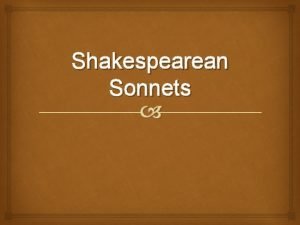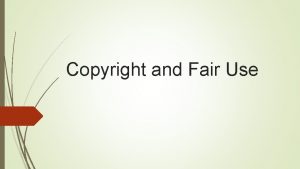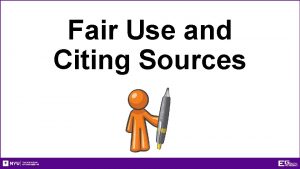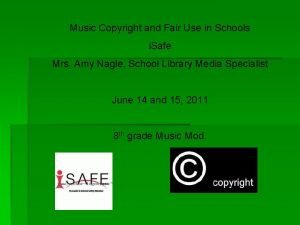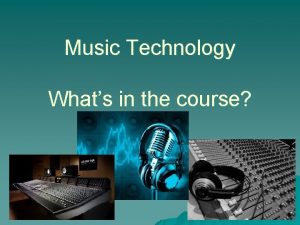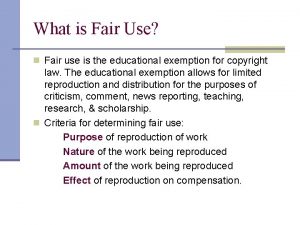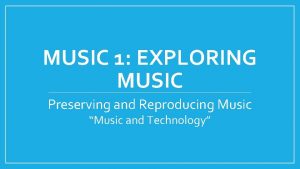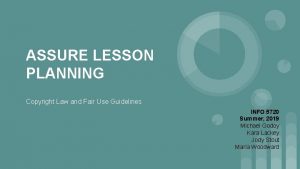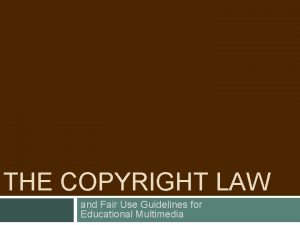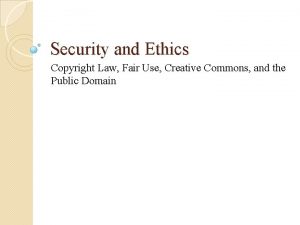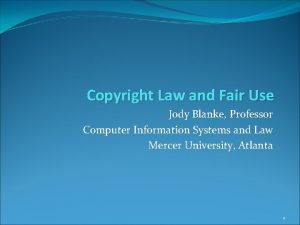Copyright Law and Music Technology Fair Use Fair














- Slides: 14

Copyright Law and Music Technology

Fair Use § Fair Use Video on You. Tube

Fair Use – the law states… § The Purpose and Character of the Use § The Nature of the Copyrighted Work § The Amount and Substantiality of the Portion Used in Relation to the Copyrighted Work as a Whole § The Effect of the Use on the Potential Market for, or Value of, the Copyrighted Work § (the “Good Faith” factor) § Transformativeness

Fair Use § Emergency Copying § Replacement must be ordered § Academic Use (not performance) § May not exceed 10% § Not a performable unit

Fair Use - Prohibited § § § Copying to avoid purchase Copying for a performance* Copying to create anthologies Reproducing consumables (wkbk) Charging students beyond cost

Notation Software § Print warm-ups, scales, etc. § Not copied from published material § Prep exercises for a piece § Isolated rhythms, melodic fragments § Edit or simplify parts for your ensemble § Must not change the nature of the work

Arrangements § Making arrangements is the exclusive right of the copyright owner § You must obtain permission § Editing and simplification is allowable as mentioned in Fair Use

Scanning Software § To edit or simplify is allowed § To arrange is prohibited § To avoid purchase is prohibited

Sequencing and MIDI § The copyright owner has the sole right to create derivative works § If no MIDI file is available, you must obtain permission from copyright owner

Accompaniment Software § Permission must be granted to create an arrangement for practice or performance § Chord changes are not copyrighted § Recording accompaniment for rehearsal may be Fair Use - unless a MIDI version is available

Audio Files § Sharing copyrighted files is illegal § Downloading purchased audio files is fine

Recordings § Single recording for study and archiving § Multiple copies for students and/or community involve paying a royalty § A license can be easily obtained

Computer Software § Commercial, Shareware, Freeware § You obtain right to use, not duplicate or distribute § Use on multiple computers requires a site license

Useful Resources § Teaching Music with Technology by Tom Rudolph § NAf. ME website § nafme copyright center § The Teacher’s Guide to Music, Media, and Copyright Law by James Frankel
 Music copyright fair use
Music copyright fair use Copyright basics for teachers
Copyright basics for teachers Music music music
Music music music Newton's first law and second law and third law
Newton's first law and second law and third law Newton's first law and second law and third law
Newton's first law and second law and third law Foul is fair and fair is foul literary device
Foul is fair and fair is foul literary device Macbeth literary devices examples
Macbeth literary devices examples Who says fair is foul and foul is fair
Who says fair is foul and foul is fair Syntax rhetorical device
Syntax rhetorical device Fair play slide
Fair play slide Examples of fair is foul and foul is fair in macbeth
Examples of fair is foul and foul is fair in macbeth Shakespearean sonnet 14 lines examples
Shakespearean sonnet 14 lines examples Boyle's law charles law avogadro's law
Boyle's law charles law avogadro's law Constant in avogadro's law
Constant in avogadro's law Classical vs romantic art
Classical vs romantic art

